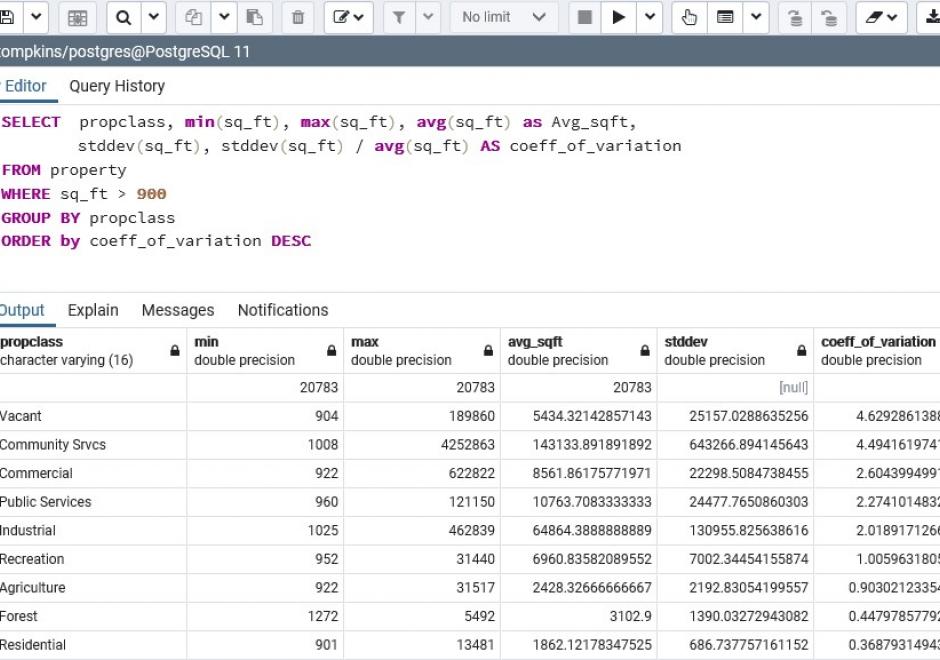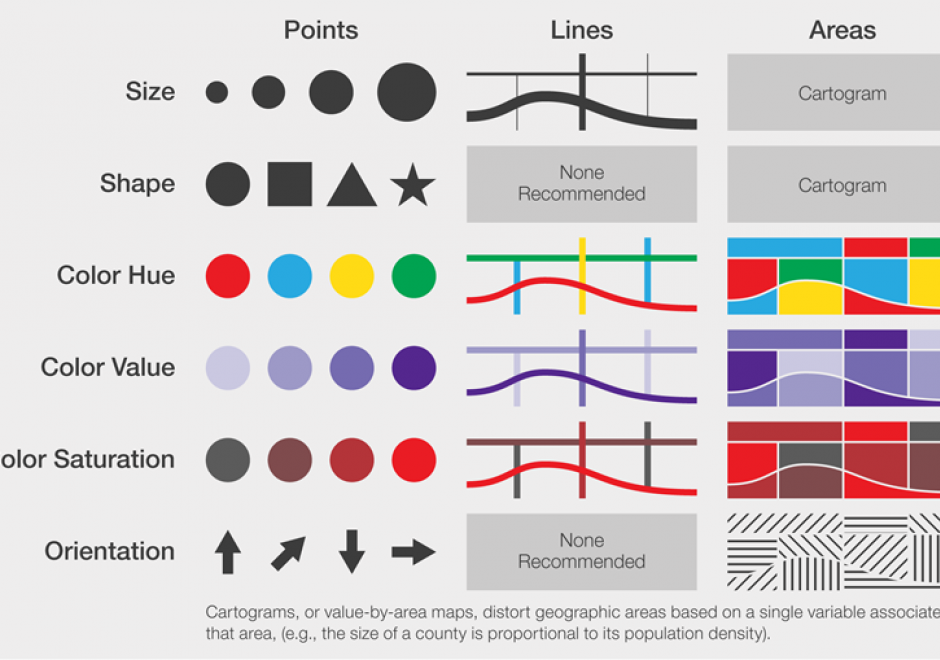DC-13 - Stereoscopy and orthoimagery

- Explain the relevance of the concept “parallax” in stereoscopic aerial imagery
- Evaluate the advantages and disadvantages of photogrammetric methods and LiDAR for production of terrain elevation data
- Specify the technical components of an aerotriangulation system
- Outline the sequence of tasks involved in generating an orthoimage from a vertical aerial photograph






CV-05 - Statistical Mapping (Enumeration, Normalization, Classification)
Proper communication of spatial distributions, trends, and patterns in data is an important component of a cartographers work. Geospatial data is often large and complex, and due to inherent limitations of size, scalability, and sensitivity, cartographers are often required to work with data that is abstracted, aggregated, or simplified from its original form. Working with data in this manner serves to clarify cartographic messages, expedite design decisions, and assist in developing narratives, but it also introduces a degree of abstraction and subjectivity in the map that can make it easy to infer false messages from the data and ultimately can mislead map readers. This entry introduces the core topics of statistical mapping around cartography. First, we define enumeration and the aggregation of data to units of enumeration. Next, we introduce the importance of data normalization (or standardization) to more truthfully communicate cartographically and, lastly, discuss common methods of data classification and how cartographers bin data into groups that simplify communication.